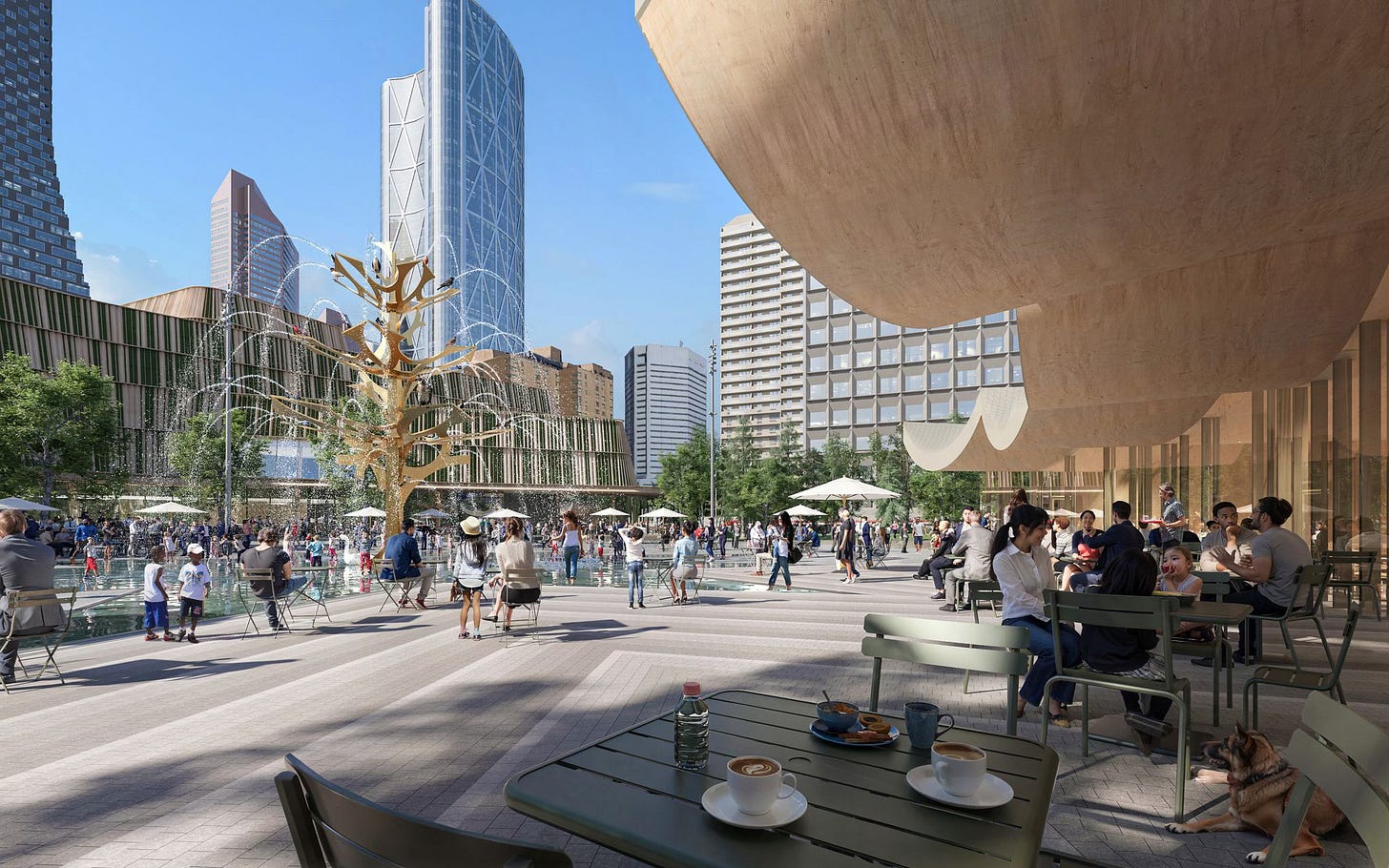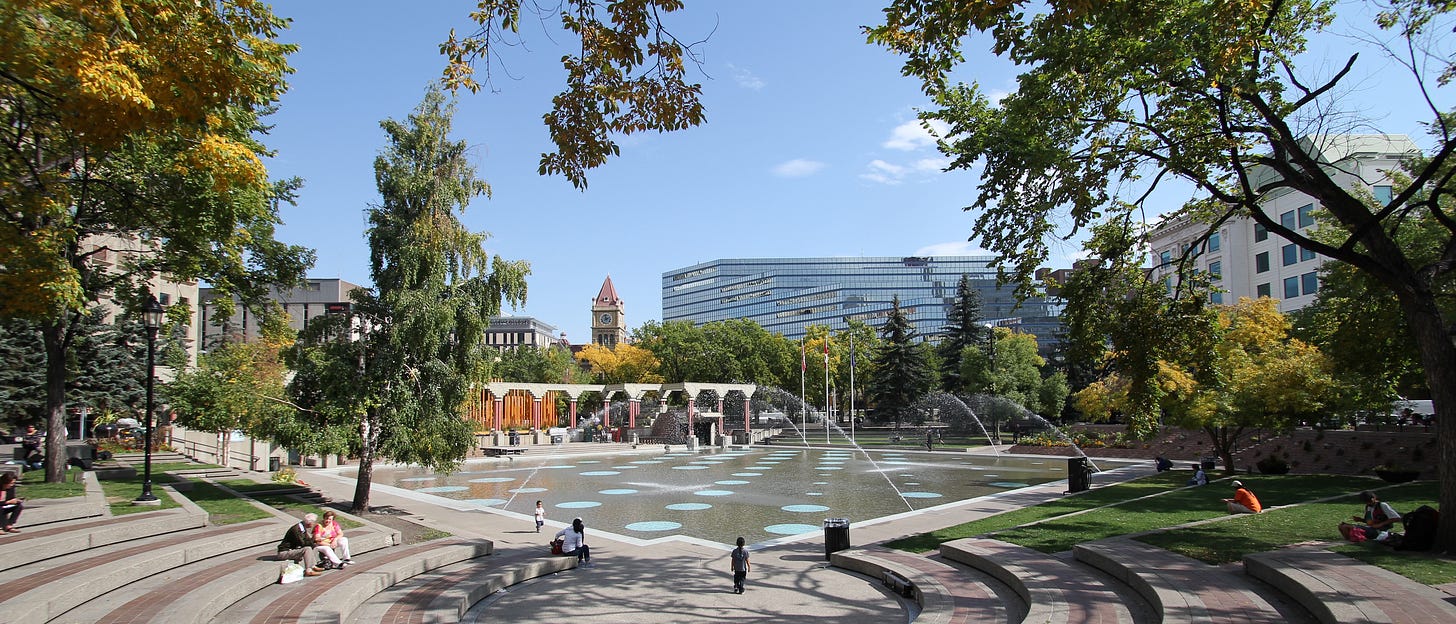One of the most useful skills I gained in architecture school is an ability to see, with my mind’s eye, what a series of technical drawings could look like in real life. In a way, every building is an experiment whose detailed formula is laid out across construction drawings, detail specs, and 3D models, but we don’t get to know for sure if the formula works until our building gets built. (This is also one of the reasons why hiring an experienced architect matters, but that’s an issue for another time.)
By the time I graduated nearly two decades ago, photorealistic renderings promised to alleviate some of this guesswork, allowing architects and their clients to find out how their vision would pan out before breaking ground. But architectural renderings quickly became a marketing tool, and rather than show the shortcomings of a project, they have tended to conceal them.
By overriding the laws of physics and value engineering, renderings today can be as deceptive as the burgers depicted in a fast-food ad. (Incidentally, Burger King is currently under litigation for allegedly misrepresenting the size of the chain’s flagship burger in its advertising.)
Like a juicy ground beef patty embraced by two warm, fluffy buns, the glistening surfaces and lively spaces depicted in architectural renderings are meant to make us yearn for an experience that is not real.
Concrete is often dull and dusty; glass can be opaque and distort the shapes it reflects; perforated metal is rarely more glamorous than poultry netting. Of course, we’re surrounded by these materials and they work out fine, sometimes even great, but unlike a prototype, an architectural rendering is unlikely to show what the finished product will look like, and create outsized expectations.
All of this came to mind when CMLC unveiled the renderings for the Olympic Plaza’s transformation in April.

While many Calgarians seemed bedazzled by the design team’s vision, I couldn’t help but see beyond the slick imagery portraying the vibrant public space some of us crave for. Were I not trained in these endeavours, I too would be excited for the plaza’s transformation.
Calgary certainly needs an awe-inspiring main square. A public plaza that’s more than a transitional space: a destination.
What the promotional materials depict, however, isn’t the result of a meticulous design process — but the outcome of a successful event.
Giving people a reason to gather, in this case, seems more important than the features of the place where said gathering is to take place.
The proposed design enables practical functions to support activation, such as providing enough space to hold a music concert in the warmer months, to install a skating rink in the winter, or to put up tents for vendors during a cultural festival.
The proposal also boasts a pavilion that could accommodate cafés, restaurants, or gift shops, giving Calgarians a reason to visit year round. The old plaza also had a similar structure, and I don’t recall it being used once since I moved to Calgary in 2010.
Because the old Olympic Plaza was already successful at holding sanctioned events and festivals, determining the impact of the new design should be based on what it introduces, or how it builds on the old plaza’s shortcomings, namely a lack of year-round vibrancy.
The renderings, however, show little evidence of this kind of renewal.
Rather than giving Calgarians a reason to spend time at the renovated space, even when there isn’t an event taking place, the plaza is once again relegated to its humble role as a transitional space, a side-dish of sorts — whereas the new Arts Commons buildings take front and centre.
Obscured by the vibrancy depicted in the renderings lies the fact that the aforementioned pavilion also blocks the connection between the municipal building and the Olympic Plaza, hinting perhaps at the true purpose of the space: a vestibule for the Arts Commons; a space where sanctioned celebrations are to take place, but not civic activities.

The new plaza’s central water feature, shaped as a snowflake in a nod to Calgary’s 1988 Winter Olympics, is the one element that could give Calgarians a reason to visit the space in a more intentional way — but will it be striking enough to turn the plaza into a destination?
A few days ago, I came across the renderings of Edmonton’s newest spray park, located on the Alberta Legislature’s grounds: flowing water sparkled in the sunlight, as people rested on a smooth, bright green lawn lined by colourful benches.
The built out ponds, whose tan water is surrounded by yellowish grass and a handful of small boulders, left some Edmontonians disappointed.
In the hot summer months, though, I’m sure the unrealistic expectations created by the project’s renderings will dissipate, and Edmonton families will once again flock to the renewed plaza to freshen up in the spray park.
Devoid of a clear social purpose, can the Olympic Plaza do the same?
Time will tell.
Stuff i’ve written since last time
Alberta to Claw Back New Federal Money for Disabled People
The Tyee
How to Build Apartments Fit for Families
The Globe and Mail





I noticed the Olympic Plaza to be more vibrant, when there were no organized events, in the winter with skaters rather than in the summer when it just seemed to have the deserted and unsafe feel. I hope that changes with this transformation and the Stephen Avenue Revitalization Project plans. Currently the delta gardens by Peace Bridge seem to be more vibrant in summers.